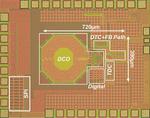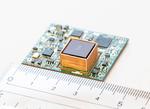Other

“Researchers at Tokyo Tech and NEC Corporation, Japan, present a 39 GHz transceiver with built-in calibration for fifth-generation (5G) applications. The advantages to be gained include better quality communications as well as cost-effective scalability. A team of more than 20 …
“Scientists at Tokyo Tech have fabricated a multiplexer/demultiplexer module based on a property of light that was not being exploited in communications systems: the optical vortex. Such devices will be crucial for improving optical networks, which are the backbone …

“Scientists at Tokyo Tech achieved magnetization reversal in cobalt-substituted bismuth ferrite by applying only an electric field. Such an effect had been sought after for over a decade in order to make new types of low-power-consumption magnetic memory devices. In …
News Organic electronics: Scientists develop a high-performance unipolar n-type thin-film transistor

“Researchers at Tokyo Tech report a unipolar n-type transistor with a world-leading electron mobility performance of up to 7.16 cm2 V−1 s−1. This achievement heralds an exciting future for organic electronics, including the development of innovative flexible …
“Researchers at Tokyo Tech have developed an easy-to-use, tunable biosensor tailored for the terahertz (THz) range. Images of mouse organs obtained using their new device verify that the sensor is capable of distinguishing between different tissues. The achievement expands possibilities …
News An ultra-low-power frequency synthesizer targeted for IoT devices: Digital PLL achieves a power consumption of 0.265 mW

“Scientists at Tokyo Tech have developed an advanced phase-locked loop (PLL)1 frequency synthesizer that can drastically cut power consumption. This digital PLL could be an attractive building block for Bluetooth Low Energy (BLE) and other wireless technologies to support …

“Scientists at Tokyo Tech, Ricoh co. and The National Institute of Advanced Industrial Science and Technology have developed an ultra-low-power atomic clock (ULPAC) for small satellites to enable future communication systems beyond 5G. The proposed device outperforms the current industry …

“Scientists at Tokyo Tech proposed new quasi-1D materials for potential spintronic applications, an upcoming technology that exploits the spin of electrons. They performed simulations to demonstrate the spin properties of these materials and explained the mechanisms behind their behavior. Conventional …

“Scientists at Tokyo Tech examined the mechanisms behind the resistance at the electrode-electrolyte interface of all-solid-state batteries. Their findings will aid in the development of much better Li-ion batteries with very fast charge/discharge rates. Designing and improving lithium-ion (Li-ion …

“Scientists at Tokyo Institute of Technology designed a new type of molecular wire doped with organometallic ruthenium to achieve unprecedentedly higher conductance than earlier molecular wires. The origin of high conductance in these wires is fundamentally different from similar molecular …
